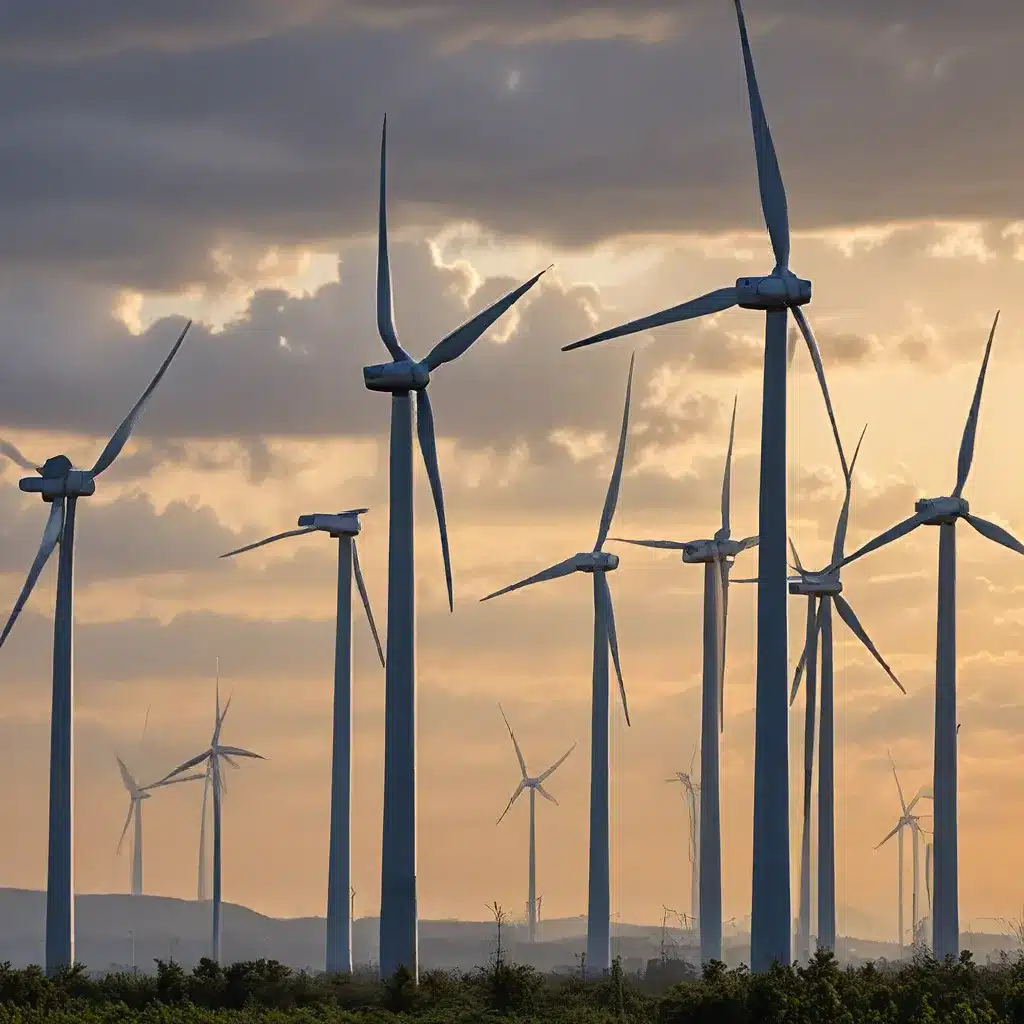
As someone passionate about renewable energy solutions, I’ve been closely following the evolving regulatory landscape surrounding this exciting field. And let me tell you, the past few years have been nothing short of a roller coaster ride! From the groundbreaking Infrastructure Investment and Jobs Act to the game-changing Inflation Reduction Act, the wheels of progress have been turning at an unprecedented pace.
But here’s the thing – all this progress doesn’t mean we’re out of the woods just yet. In fact, I’d argue that the real challenge is just beginning. You see, while the government has made some significant strides in creating the financial incentives and policy frameworks to support renewable energy, the actual implementation and deployment of these solutions is still fraught with complexity and coordination challenges.
Navigating the Regulatory Maze
Take offshore wind, for example – a technology that holds immense promise for coastal regions like New England, New York, and the Mid-Atlantic. The Biden administration has set some lofty goals, aiming for 30 gigawatts (GW) of offshore wind capacity by 2030 and at least 110 GW by 2050. And many states in these regions have even more ambitious targets, collectively exceeding the federal benchmarks.
But here’s the rub – the planning and construction of the transmission infrastructure needed to bring this offshore-generated electricity to onshore demand centers is a regulatory minefield. Existing frameworks simply weren’t designed for these types of large-scale, cross-jurisdictional projects. And as a result, developers, policymakers, and other stakeholders are often left navigating uncharted waters.
Clearing the Bottlenecks
One promising solution that the Department of Energy (DOE) has identified is the designation of National Interest Electric Transmission Corridors (NIETCs) along the Atlantic Coast. These geographic areas, based on the DOE’s National Transmission Needs Study, are where consumers are being harmed by transmission gaps, and where new infrastructure would provide significant benefits in terms of reliability, affordability, and clean energy integration.
By designating these corridors as NIETCs, the DOE can unlock key financing mechanisms like the Transmission Facility Program and the Transmission Facility Financing loan program, which were established by the Infrastructure Investment and Jobs Act and the Inflation Reduction Act, respectively. This could be a game-changer in addressing the coordination, leadership, and logistical challenges that have plagued offshore transmission planning and development.
Unlocking the Potential
But the benefits of these NIETC designations go far beyond just offshore wind. They could also help alleviate the significant congestion and capacity constraints that exist between the major electricity markets along the Atlantic Coast – from New England to the Carolinas. In fact, the DOE’s analysis suggests that these regions could need more than four times their current transfer capacity by 2035 to support projected load growth and clean energy targets.
Improved transmission networks not only facilitate the integration of renewable resources, but they also enhance grid resilience and help stabilize wholesale electricity prices. During extreme weather events like the 2018 “bomb cyclone,” for example, each additional gigawatt of transmission capacity between New England, New York, and the Mid-Atlantic could have saved $30-40 million.
Collaboration and Coordination
Of course, the challenges of developing a robust, interregional transmission system are not limited to just regulatory hurdles. There are also complex coordination issues that need to be addressed across state and regional boundaries.
Encouragingly, we’ve seen some promising collaborative efforts emerge, like the Joint State Innovation Partnership for Offshore Wind in New England and the Interregional Stakeholder Advisory Committee between PJM, ISO-NE, and NYISO. But these initiatives have been stymied by a lack of clear authority to jointly plan transmission, streamline approval processes, and resolve thorny cost allocation disputes.
That’s where the federal government can and should step in. By designating these critical transmission corridors as NIETCs, the DOE can provide the leadership and coordination that’s been sorely lacking. It can direct developer and state attention to where transmission is most needed, while also unlocking the financial and logistical tools to get the job done.
A Brighter Future Ahead
I know it might all sound a bit complicated, but trust me, the stakes couldn’t be higher. Unlocking the promise of renewable energy is essential for meeting our climate goals, strengthening grid resilience, and keeping energy costs in check for consumers. And transmission infrastructure is the linchpin that holds it all together.
So, while the road ahead may be winding and uncertain, I’m confident that with the right regulatory frameworks, collaborative spirit, and federal leadership, we can build the clean, reliable, and affordable energy system of the future. After all, as Senator Angus King has rightly pointed out, “In order to grow our economy, keep communities safe during extreme weather events, address historic environmental injustices, and decrease energy costs for consumers, a robust and well-planned transmission grid is essential.”
Onward and upward, friends. The future of clean energy is ours to shape – let’s get to work!

